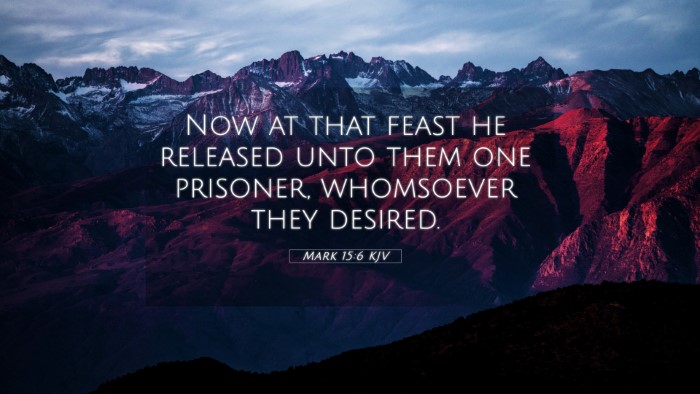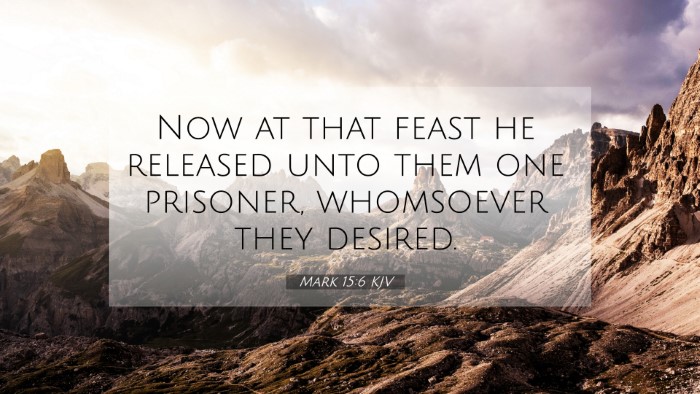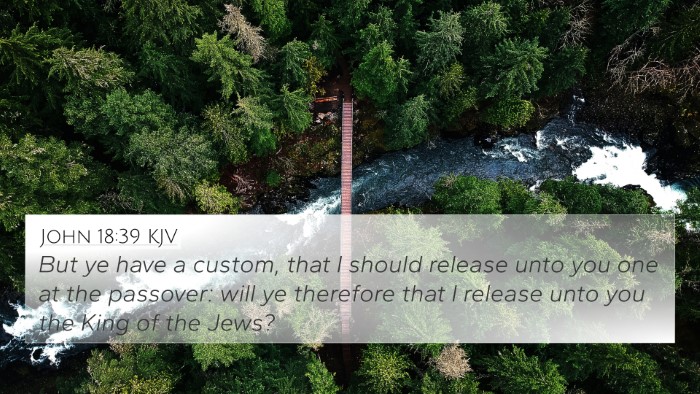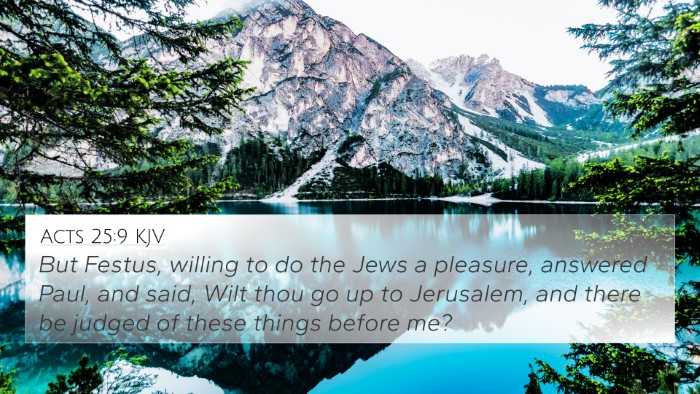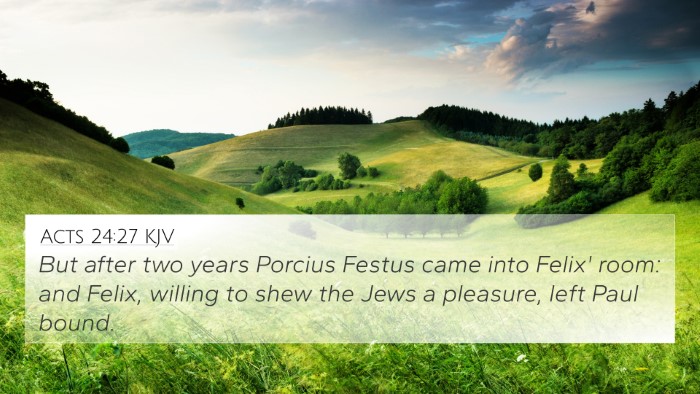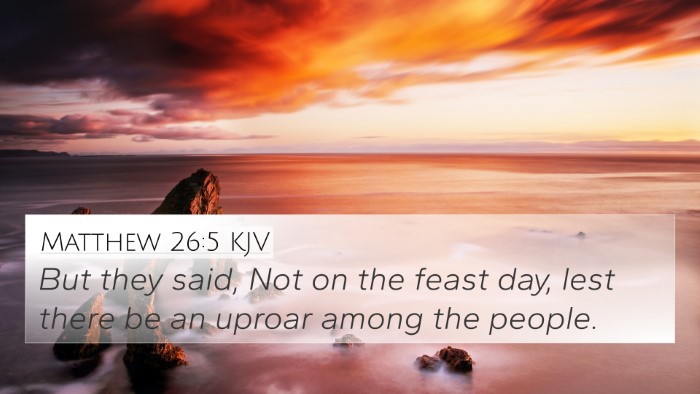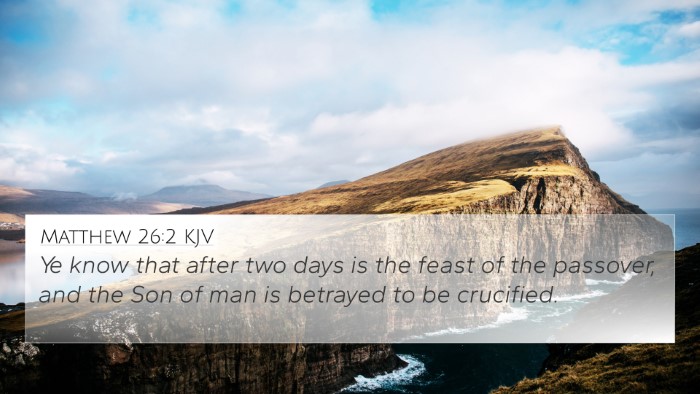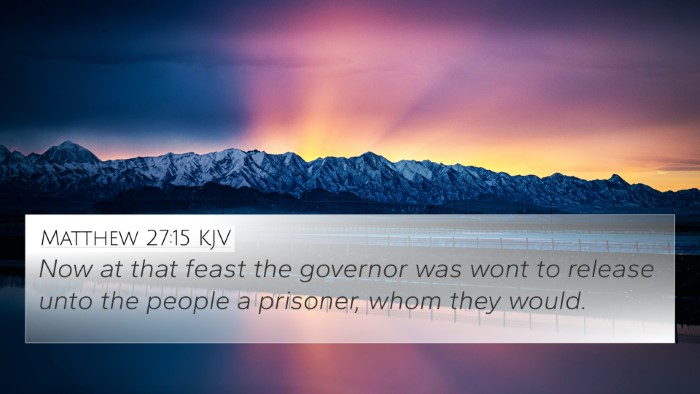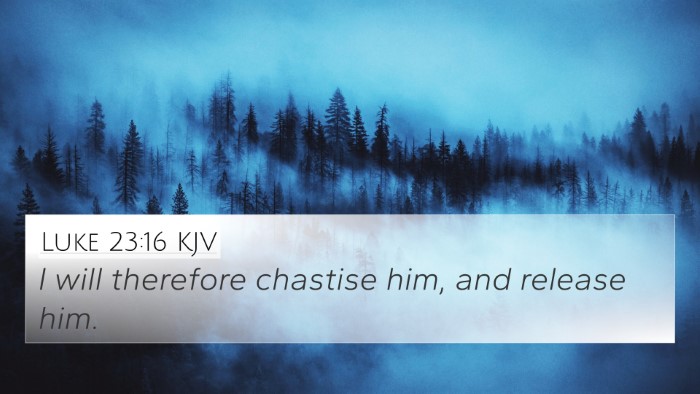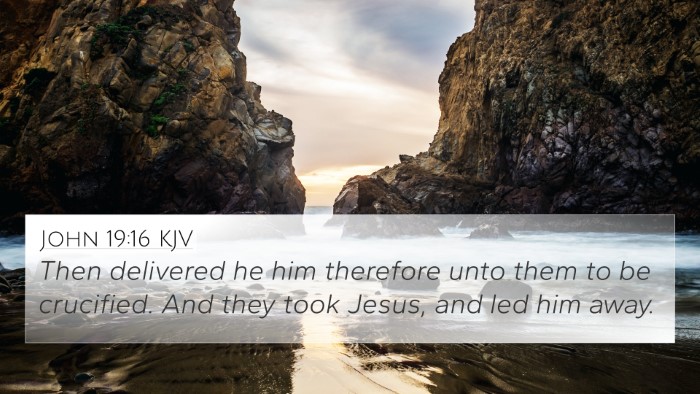Understanding Mark 15:6
This verse, Mark 15:6, depicts a significant moment in the trial of Jesus. The passage reads: "Now at that feast he released unto them one prisoner, whomsoever they desired."
Context and Significance
The context of Mark 15:6 takes place during the Passover festival, when it was customary for the governor to release a prisoner to the crowd. This tradition symbolizes mercy and the opportunity for freedom.
Commentary Insights
Matthew Henry's Commentary
Matthew Henry emphasizes the mercy extended during Passover and how this tradition reflects God's desire to save humanity. In a way, the choice of Jesus versus a notorious prisoner illustrates the human condition and the nature of choice between good and evil.
Albert Barnes' Notes
Albert Barnes notes that the act of releasing a prisoner during the feast was an established custom that fulfilled the expectations of the Jewish people. This mirrors God's covenantal practice of redemption, showing how Jesus, who is innocent, is unjustly placed before the crowd.
Adam Clarke's Commentary
Adam Clarke provides insights into the political implications of this practice and the crowd's influence in the decision-making process. He highlights the contrast between Jesus, the Messiah, and Barabbas, a criminal, echoing themes of sacrifice and choice throughout the scripture.
Cross-References
This verse connects with several other scriptural passages, enhancing its depth and understanding:
- Matthew 27:15 - The parallels in the handling of Jesus' trial are echoed in Matthew’s account.
- Luke 23:18-19 - Luke recounts the people's preference for the criminal Barabbas over Jesus.
- John 18:39-40 - John's gospel discusses the custom and introduces the choice faced by the people.
- Isaiah 53:3 - This prophesied the rejection of the Messiah, relevant to the choice the crowd will make.
- Acts 3:14 - Peter references the choice made at Jesus' trial, highlighting the injustice faced by Christ.
- Romans 5:8 - This passage reflects on Christ’s sacrificial love and connection to His unjust condemnation.
- Hebrews 9:22 - Discusses the significance of blood and sacrifice, relevant to the significance of Jesus as the chosen one.
Thematic Connections
Mark 15:6 speaks to overarching themes in the Bible such as:
- Choice and Redemption: The opportunity given to the people to choose symbolizes the choices everyone faces concerning Christ.
- Innocence and Guilt: The contrast between Jesus and Barabbas highlights themes of guilt in humanity versus Christ’s innocence.
- Feast and Sacrifice: The timing during the Passover points to the connection between the sacrificial lamb and Jesus as the ultimate sacrifice.
Practical Applications
In studying Mark 15:6 and its connections:
- Reflect on Personal Choices: Like the crowd, we often face choices concerning our faith and what we desire in life.
- Study Cross-References: By examining linked passages, readers can gain deeper insights into the scripture's unity and themes.
- Engage with Themes: Identify and reflect on themes like redemption and sacrifice in both Old and New Testament writings.
Conclusion
Mark 15:6 serves as more than just a historical recount of a moment; it encompasses profound theological implications rooted in the traditions of the Jewish faith and foreshadowing the ultimate sacrifice of Jesus Christ. Understanding this verse through various commentaries enriches the reader's comprehension of its significance and connects it deeply with the broader narrative of the Bible.

